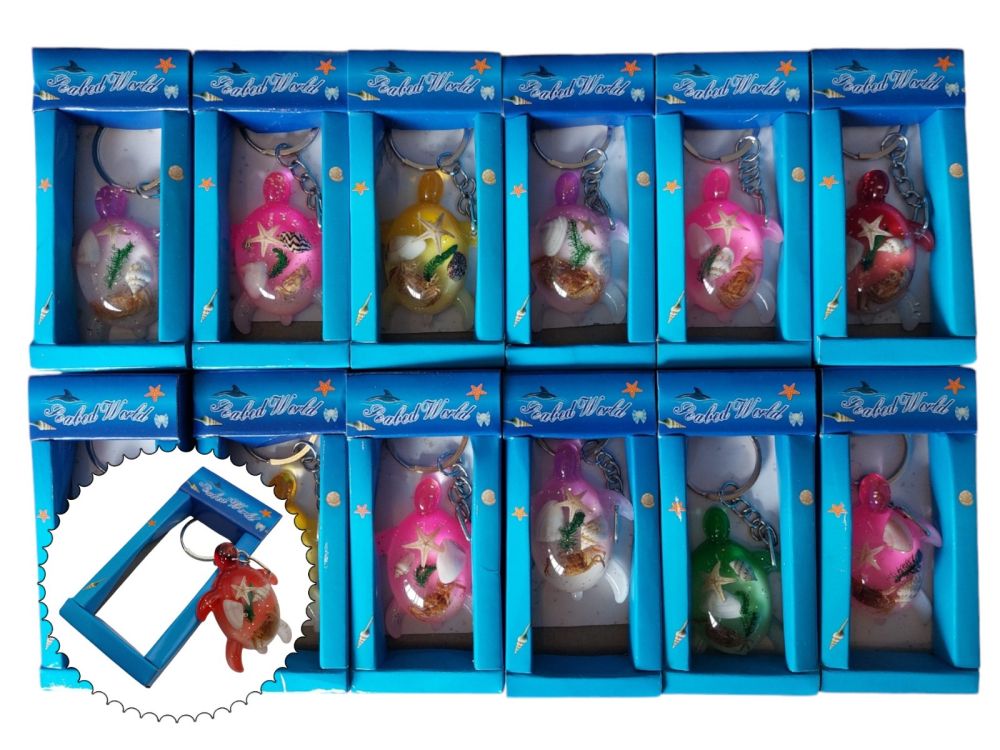We use cookies to make your experience better.
TimmersGems has a new website, existing customers also need to register again.
Turtle with inlaid shell/starfish/crab - key rings packed per 12 pieces BESTSELLER.
We sell more than 18,000 key rings annually, with number 1 approx. 11-12,000 gemstone key rings) at number 2; approx. 4000 shell key rings and at number 3; Insects with more than 2000 key rings.
Availability:
In stock
SKU
121602
- Buy 60 for €1.50 each and save 25%
- Buy 240 for €1.25 each and save 37%
Turtle with inlaid shell/starfish/crab - key rings packed per 12 pieces BESTSELLER. is available to buy in increments of 12
Turtles (Testudines) are an order of reptiles of which all species are characterized by a sturdy and often spherical shield. Turtles can vary greatly in size, colors and lifestyle but are easily distinguished from all other reptiles by the external shield. All turtles have a bony shield on both the belly side (plastron) and the back side (carapace), unlike all other modern reptiles such as crocodilians, lizards and snakes. The shield is usually provided with a second armor, the horn shield. The carapace is connected to the plastron by a bony bridge on either side of the body. Turtles usually reproduce annually and are without exception oviparous. They grow rapidly when young but develop very slowly. Larger turtles do not reach maturity for several decades, but such species can also become very old. The menu includes both animal and vegetable matter, depending on the species. There are approximately 330 different species of turtles, divided into 14 families. Turtles are found all over the world in various biotopes, such as forests, grasslands, swamps and seas. Dozens of species are seriously threatened by human activities. The main threats are habitat destruction and the collection of wild turtles for consumption or the pet trade. Turtles can be clearly distinguished from all other animals by the round to oval, dome-shaped carapace that contains most of the body. The head and forelegs protrude through an opening at the front, the tail and hind legs through an opening at the back. The shell consists of a flat underside, the plastron and a usually convex upper side, the carapace. These two parts are connected by a bony bridge on either side of the shell between the front and back legs. There are also turtles where the shell is bordered by a wide strip of skin, such as the softshell turtles. The inside of the shell consists of skin bones or bony plates, these are formed from the ribs and projections of the thoracic vertebrae. The bony plates are formed from bone tissue of the internal skeleton. The horny plates consist of keratin, this is a hard and horny substance that offers protection against external parasites. The scales of turtles (and all other reptiles) also consist of keratin. The horny plates lie against each other, the edges of the horny plates overlap those of the bony plates, which increases the strength. The bony plates are fused with the thoracic vertebrae of the spinal column, so that a turtle cannot leave its shell. On the outside, the skin is reinforced with horny shields or horny plates (laminae) that originate in the epidermis. The bony plates give the shield its shape. The shape of the shield is often approximately the same in the different sexes. The horny plates give the shield the often species-dependent colour and pattern. Because the shield shape and pattern are usually characteristic of the species, they are important identification features. The colour and pattern are often slightly different per individual, this is as it were the fingerprint of a turtle. A land-dwelling turtle has a spherical shield, a water-bound turtle has a lighter, flat shield to be able to swim better. In addition to a relatively light shield, sea turtles have a strongly streamlined shield shape that ends pointed at the back. This has to do with better hydrodynamics that suit the permanently swimming lifestyle.
| Dimensions | Divers |
|---|---|
| Country of Manufacture | China |












